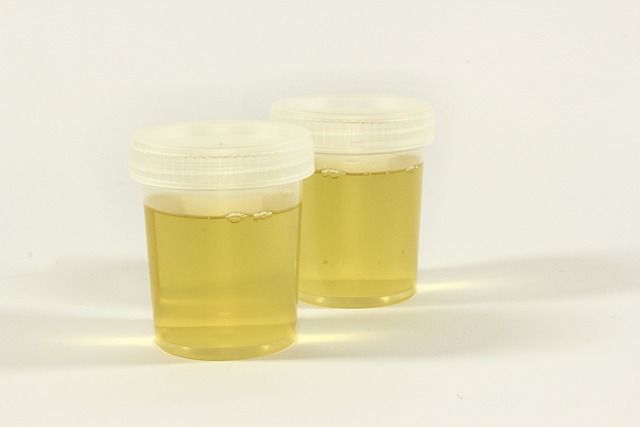The Silent Symptoms of Hemoglobinuria You Must Spot Early
Hemoglobinuria often goes undetected in its early stages because the first signs appear minor. Paying attention to urine changes, persistent tiredness, or other subtle indicators can make a big difference in preventing complications. Discover the warning signs you should never overlook to safeguard your health.

What is hemoglobinuria and its causes?
Hemoglobinuria occurs when red blood cells break down, releasing hemoglobin into the bloodstream. This excess hemoglobin is then filtered by the kidneys and excreted in the urine. Several factors can lead to this condition:
-
Paroxysmal nocturnal hemoglobinuria (PNH): A rare acquired blood disorder that causes red blood cells to break down prematurely.
-
Hemolytic anemia: A group of disorders characterized by the destruction of red blood cells faster than they can be replaced.
-
Physical trauma: Intense physical activities or injuries that cause damage to red blood cells.
-
Infections: Certain bacterial and viral infections can lead to hemolysis and subsequent hemoglobinuria.
-
Medications: Some drugs may trigger hemolysis as a side effect.
Understanding these causes is essential for identifying potential risk factors and seeking appropriate medical attention when necessary.
What are the signs and symptoms of hemoglobinuria?
Hemoglobinuria can present with various symptoms, some of which may be subtle and easily overlooked. Being aware of these signs is crucial for early detection:
-
Dark or cola-colored urine: This is often the most noticeable symptom, especially in the morning or after physical exertion.
-
Fatigue and weakness: As red blood cells are destroyed, individuals may experience persistent tiredness and reduced energy levels.
-
Shortness of breath: Anemia resulting from hemolysis can lead to difficulty breathing, especially during physical activities.
-
Pale skin: The destruction of red blood cells can cause pallor, particularly noticeable in the face, lips, and nail beds.
-
Jaundice: In some cases, the breakdown of red blood cells may lead to a yellowing of the skin and eyes.
-
Abdominal pain: Some individuals may experience discomfort in the upper abdomen, particularly in cases of PNH.
-
Increased heart rate: The body may compensate for anemia by increasing the heart rate, leading to palpitations.
It’s important to note that these symptoms can vary in severity and may not all be present in every case of hemoglobinuria.
How is hemoglobinuria diagnosed and treated?
Diagnosing hemoglobinuria involves a combination of clinical evaluation, urine tests, and blood work. Healthcare providers may employ the following methods:
-
Urinalysis: To detect the presence of hemoglobin and other abnormalities in the urine.
-
Complete blood count (CBC): To assess the levels of red blood cells, white blood cells, and platelets.
-
Flow cytometry: Particularly useful in diagnosing PNH by examining the surface proteins of blood cells.
-
Hemoglobin electrophoresis: To identify abnormal hemoglobin types that may be causing hemolysis.
Treatment approaches for hemoglobinuria depend on the underlying cause and may include:
-
Addressing the primary condition: For instance, treating infections or discontinuing medications that may be causing hemolysis.
-
Supportive care: This may involve blood transfusions, iron supplementation, and folic acid to support red blood cell production.
-
Targeted therapies: In cases of PNH, medications like eculizumab or ravulizumab may be prescribed to prevent red blood cell destruction.
-
Lifestyle modifications: Avoiding triggers such as intense physical activities or exposure to cold temperatures in certain cases.
-
Monitoring and follow-up: Regular check-ups to assess the effectiveness of treatment and adjust strategies as needed.
When should you seek medical attention for hemoglobinuria?
While some cases of hemoglobinuria may be transient and benign, it’s essential to know when to consult a healthcare provider:
-
Persistent dark urine: If you notice consistently dark or cola-colored urine, especially in the morning, it’s time to seek medical advice.
-
Accompanying symptoms: If dark urine is accompanied by fatigue, shortness of breath, or abdominal pain, prompt medical evaluation is necessary.
-
Unexplained anemia: If you’ve been diagnosed with anemia without a clear cause, hemoglobinuria should be considered as a potential factor.
-
History of blood disorders: Individuals with a personal or family history of blood disorders should be particularly vigilant about any changes in urine color or unexplained symptoms.
-
After physical trauma: If you notice dark urine following intense physical activity or injury, consult a healthcare provider to rule out hemoglobinuria.
Early detection and intervention can significantly improve outcomes and prevent potential complications associated with underlying conditions causing hemoglobinuria.
Understanding the silent symptoms of hemoglobinuria is crucial for maintaining overall health and well-being. By staying attuned to subtle changes in urine color and being aware of associated symptoms, individuals can take proactive steps in seeking timely medical care. Remember, while hemoglobinuria can be a sign of serious conditions, many cases are treatable with proper diagnosis and management. Always consult with a healthcare professional for personalized advice and treatment options.
This article is for informational purposes only and should not be considered medical advice. Please consult a qualified healthcare professional for personalized guidance and treatment.




